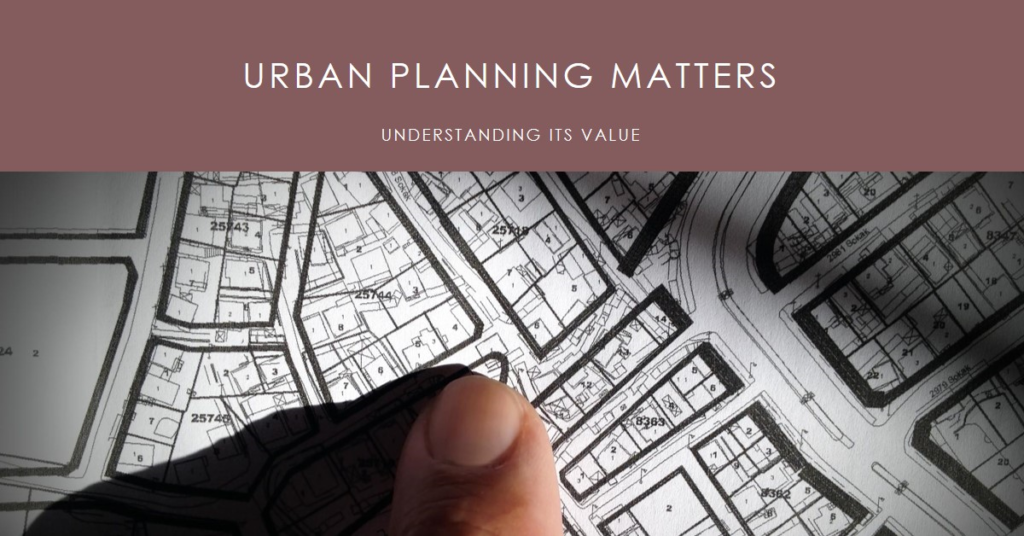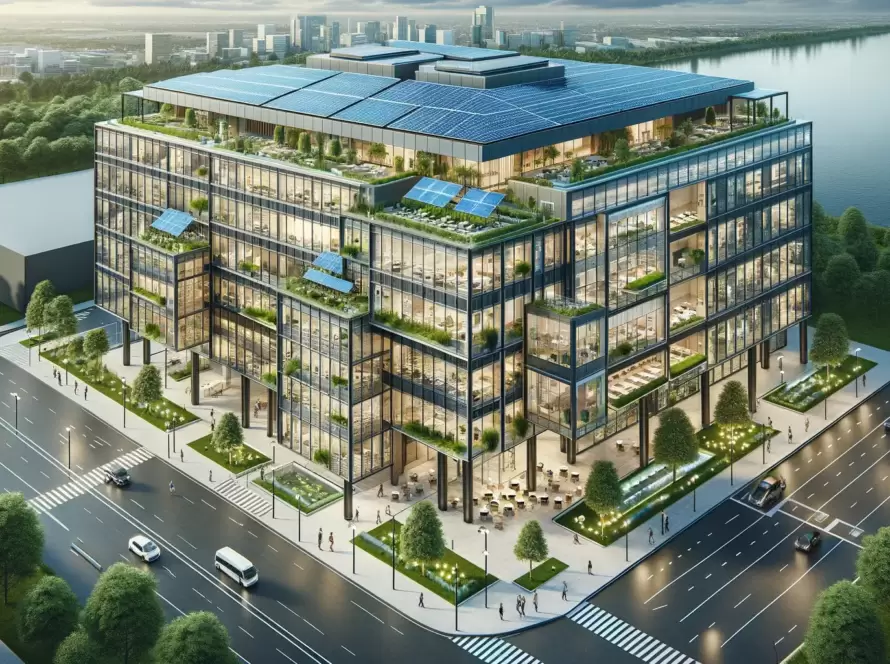
Table of Contents
- Introduction:
- The Foundation of Sustainable Cities:
- Enhancing Quality of Life:
- Economic Vitality and Job Creation:
- Efficient Transportation and Mobility:
- Resilience to Natural Disasters:
- Preserving Cultural Heritage:
- Addressing Housing Needs:
- Promoting Public Health:
- Fostering Innovation and Creativity:
- Conclusion:
Introduction:
Urban planning is a pivotal component in the development and sustainability of modern cities. As urban populations continue to grow, the importance of thoughtful and strategic planning cannot be overstated. This blog post explores the multifaceted value of urban planning, highlighting its significance in creating livable, efficient, and resilient cities.
The Foundation of Sustainable Cities:
Urban planning lays the groundwork for sustainable cities. By integrating environmental considerations into city development, planners can mitigate the adverse effects of urbanization. Sustainable urban planning involves the careful management of resources, reduction of carbon footprints, and promotion of green spaces.
For instance, green belts and parks not only enhance the aesthetic appeal of a city but also contribute to better air quality and biodiversity. Moreover, sustainable urban planning can lead to the development of energy-efficient buildings and public transport systems that reduce reliance on fossil fuels, thereby curbing greenhouse gas emissions.
Enhancing Quality of Life:
A well-planned city significantly enhances the quality of life for its residents. Thoughtful urban design ensures that essential services such as healthcare, education, and recreation are easily accessible. Furthermore, well-planned cities promote social equity by ensuring that all residents, regardless of their socioeconomic status, have access to these vital services.
Public spaces designed for community interaction foster social cohesion and a sense of belonging among residents. Urban planners also focus on creating safe neighborhoods by incorporating principles of Crime Prevention Through Environmental Design (CPTED), which can reduce crime rates and improve residents’ sense of security.
Economic Vitality and Job Creation:
Urban planning is a catalyst for economic growth and job creation. By strategically zoning areas for commercial, industrial, and residential use, planners can attract businesses and investors. This, in turn, creates employment opportunities and stimulates local economies.
Furthermore, effective urban planning can enhance the efficiency of transportation networks, reducing congestion and improving access to markets. This boosts productivity and allows businesses to thrive. Additionally, the construction and maintenance of infrastructure generate numerous jobs, contributing to the overall economic vitality of the city.
Efficient Transportation and Mobility:
One of the primary objectives of urban planning is to ensure efficient transportation and mobility. Well-designed transportation systems facilitate the smooth movement of people and goods, reducing travel time and congestion. This includes the development of public transportation networks, pedestrian pathways, and cycling lanes.
Urban planners also focus on integrating different modes of transport to create a seamless travel experience. By promoting the use of public transportation and non-motorized travel, cities can reduce traffic congestion and lower pollution levels. Moreover, efficient transportation networks are crucial during emergencies, ensuring that residents can evacuate quickly and that emergency services can respond promptly.
Resilience to Natural Disasters:
Urban planning plays a critical role in enhancing a city’s resilience to natural disasters. By assessing risks and vulnerabilities, planners can design cities that are better prepared to withstand and recover from disasters such as earthquakes, floods, and hurricanes. This includes the implementation of building codes and land-use regulations that minimize damage and protect lives.
Furthermore, urban planners work on creating disaster response and recovery plans that ensure swift action in the aftermath of a disaster. The incorporation of resilient infrastructure, such as flood defenses and earthquake-resistant buildings, significantly reduces the impact of natural disasters on urban populations.
Preserving Cultural Heritage:
Preserving cultural heritage is another important aspect of urban planning. Historical sites and buildings contribute to a city’s identity and attract tourism. Urban planners must balance the need for modernization with the preservation of these cultural assets.
This involves the careful integration of old and new structures, ensuring that historical sites are maintained and protected while allowing for contemporary development. By preserving cultural heritage, cities can retain their unique character and appeal, fostering a sense of pride among residents and enhancing the overall cultural experience for visitors.


Addressing Housing Needs:
Addressing housing needs is a fundamental concern of urban planning. As urban populations grow, the demand for affordable and adequate housing increases. Urban planners must devise strategies to ensure that all residents have access to safe and affordable housing options.
This includes the development of mixed-use neighborhoods that offer a variety of housing types and price points. Planners also focus on preventing urban sprawl by promoting higher-density developments and the efficient use of land. By addressing housing needs, urban planning helps to reduce homelessness and housing insecurity, contributing to social stability and well-being.
Promoting Public Health:
Urban planning has a significant impact on public health. By designing cities that encourage physical activity, such as walking and cycling, planners can help combat the rise of lifestyle-related diseases. Access to parks, recreational facilities, and green spaces also promotes mental well-being.
Moreover, urban planners work to ensure that cities have adequate healthcare facilities and services. They also focus on creating environments that minimize exposure to pollutants and toxins, thereby reducing the incidence of respiratory and other health problems. In this way, urban planning contributes to the overall health and well-being of city residents.
Fostering Innovation and Creativity:
Urban planning fosters innovation and creativity by creating environments that inspire and support new ideas. Mixed-use developments, innovation hubs, and creative districts are examples of how urban planning can nurture the growth of creative industries and technology sectors.
By providing spaces where people can collaborate and share ideas, urban planners help to cultivate a vibrant, dynamic urban culture. This not only attracts talent and investment but also drives the economic and social development of the city. In essence, urban planning creates the conditions for innovation to flourish, ensuring that cities remain competitive and forward-looking.
Conclusion:
Urban planning is indispensable for the development of thriving, sustainable, and resilient cities. Its multifaceted benefits, ranging from enhanced quality of life and economic vitality to improved public health and cultural preservation, underscore its importance. As cities continue to grow and evolve, the role of urban planning in shaping the future cannot be underestimated. By prioritizing thoughtful and strategic planning, we can create cities that not only meet the needs of their residents but also stand the test of time.


